To access the 5500-iSIC from the internet, its address must be opened to the public. This typically is done with port forward on the router.
5500-iSIC Setup
——————–
IP: internal_IP
Port: 9999 and 10001
Router Setup
——————–
IP: public_IP
Port: 9999 and 10001
The public_IP is the IP address of the router that the public can access.
The router should be set to open a pinhole (or port forwarding) to map the public_IP:9999 and public_IP:10001 to internal_IP ports 9999 and 10001.
To access the 5500-iSIC from the internet, specify public_IP in your Port Redirector setup.
The router must have a static IP address. This is so that the IP address entered into the Port Redirector software does not need to change each time power is cycled to the router.
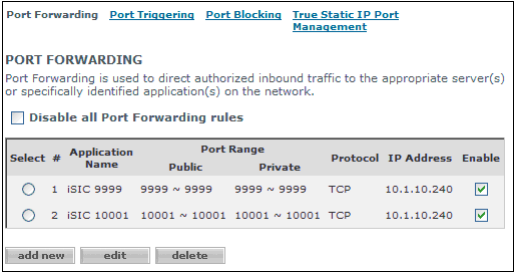
Figure 1: Example Comcast router port forwarding setup
On the local network the device is installed on…
Please follow the steps in the 5500-iSIC Quick Start Guide to setup the 5500-iSIC Wi-Fi connection for the first time. This section uses the Device Installer software to change the 5500-iSIC Wi-Fi configuration.
Note: this step must be performed on the local network the 5500-iSIC is connected to. For example, the computer should be connected to the same wireless router the 5500-iSIC is connected to.
From windows Start Menu, run the Lantronix DeviceInstaller program. The program will automatically detect 5500-iSICs on the network. Click Search to find devices powered after running the program.

Figure 2: Lantronix DeviceInstaller
Click the Assign IP icon and select Assign IP Address from the Device menu. Follow the instructions to setup the device to use a static IP address. Note: the address assigned here should be based on the individual network. Contact a system administrator for allowable IP addresses.
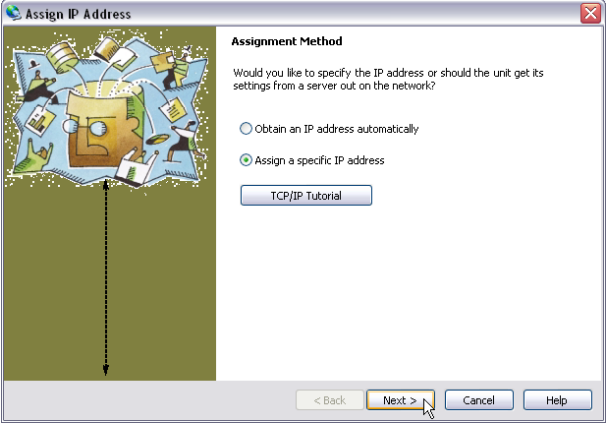
Figure 3: Assign IP Address
Place a check in “Assign a specific IP address” and click Next. Then enter the desired IP address (make sure it will not conflict with the DHCP server).
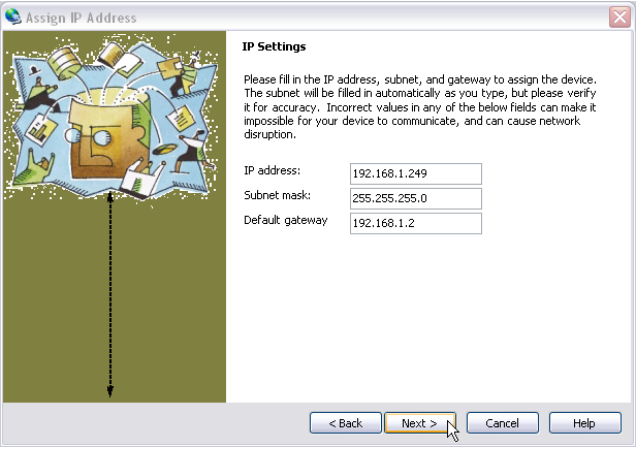
Figure 4: Enter specific IP Settings
If the device will be running on the same subnet as the iChart your computer, run the command prompt and enter “ipconfig” to access the Subnet Mask and Default Gateway. Otherwise contact a
system administrator for these values.
To access the command prompt from the Start Menu select:
Start -> All Programs -> Accessories -> Command Prompt. At the prompt, type “ipconfig” and hit Enter.
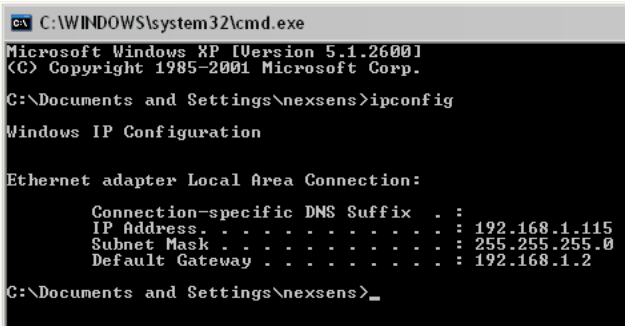
Figure 5: IP Config in a Command Prompt
Click the Assign button when ready. Make sure the device is still powered and connected to the internet.
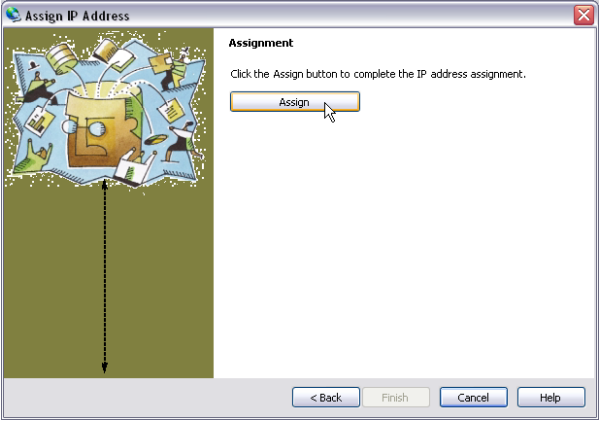
Figure 6: Click the Assign button
After successfully assigning an IP, record the IP Address shown as it will be needed later. After the IP has been assigned, cycle the power to the 5500-iSIC.
At this point, restart the computer to make sure the 5500-iSIC will function properly.
In the Lantronix Device Installer, click the Tools menu and select Ping.
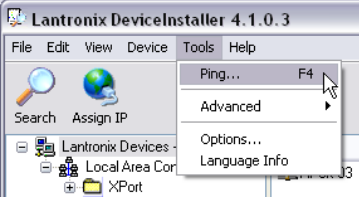
Figure 7: Click Tools, then Ping
The Ping Device window will appear. Enter the IP Address of the 5500-iSIC device that was found during search and click Ping. “Reply from…” should appear. This means the data logger is working.
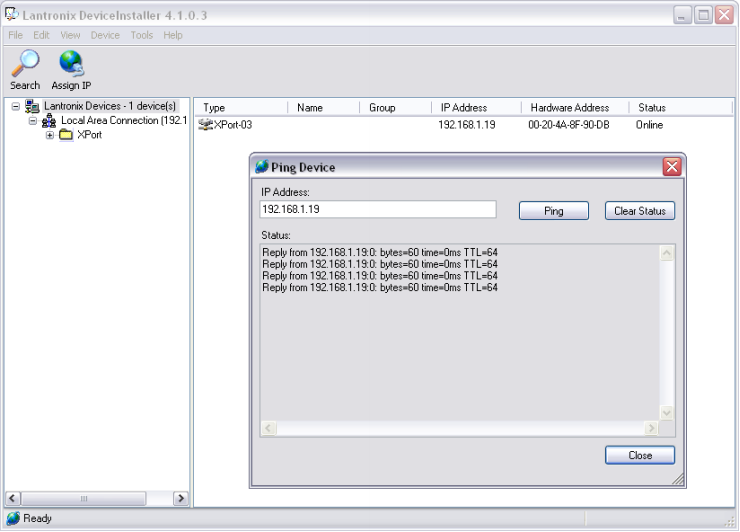
Figure 8: A successful ping will show replies
If required, configure any router to port forward an external IP address to the internal 5500-iSIC IP address, so that computers offsite may access it. Port 10001 for TCP/IP traffic
and port 9999 for telnet traffic must be open for the device to work properly.
On the computer running iChart software…
After successfully pinging the device locally, close Device Installer software and run Labtronics Redirector from the Start menu on the computer that will be running iChart software.
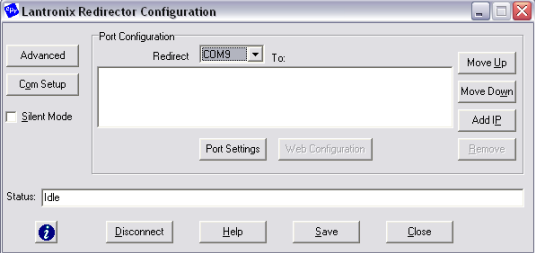
Figure 9: Lantronix Redirector
Record the COM port listed next to “Redirect” as this will be used later.
After recording the COM port, click on the Port Settings button and place a check in “Raw Mode” as shown below.
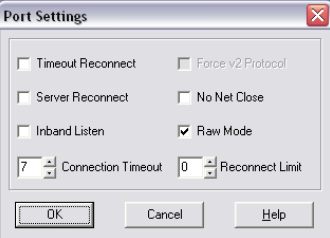
Figure 10: Check Raw Mode
Click OK and then click on the Add IP button. Enter the IP address previously recorded and pinged in the Host field. Then enter “10001” into the TCPPort field.
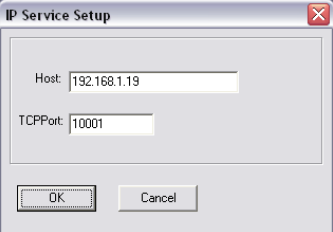
Figure 11: IP Service Setup window
Click OK in this window and then press the Save button. The software will state that the changes will take effect the next time the COM port is opened.
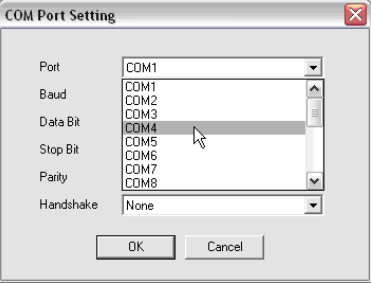
Figure 12: COM Port Setting window
Click Close and run iChart. Select Advanced | iSIC | iSIC from the menu. The iSIC Setup window will appear. Click on Change COM Port, Baud… and select the COM port recorded
earlier. By default, the iSIC Datalogger will use 9600 baud, N81 (No parity, 8 data bits, 1 stop bit). The address can be left as “0″ and the connection should be set to “Direct connect”.
Click the Connect button. A pop up window should appear as shown below. This means the 5500-iSIC and redirector software is successfully working.
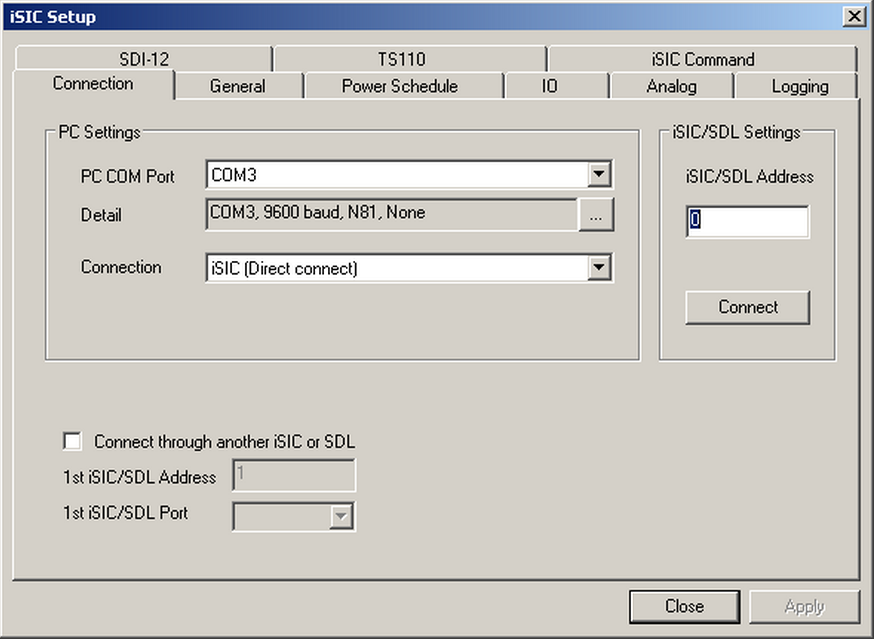
Figure 13: iSIC Setup window
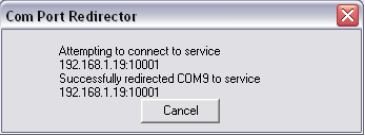
Figure 14: COM Port Redirector
After the pop up window goes away, click on the General tab. iChart will read the current configuration settings of the iSIC. This will take a few seconds. After iChart has successfully read the status information, it will be displayed on the bottom of the screen. If ‘???’ appear displayed in the iSIC Time or Firmware fields, then there is a problem with the cable connection between the iSIC and Ethernet modem.
Once the iSIC Time and Firmware version can be seen, the system is all ready to go. Simply follow the sensor interface manuals of the sensors that are to be connected. Be sure to use “Direct connect” as the connection type, and double-check the COM port used by the Redirector software when setting up the sensors.
Changing Default Settings (such as ports)
To change the ports being used, refer to the article on changing ports for 5100-iSIC. The process is the same.
REV: 13G30
